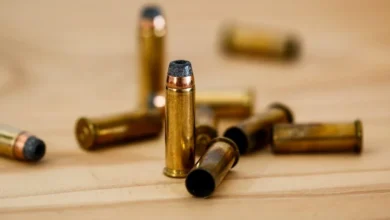High-Accuracy 3D Mapping Made Easy with Drone LiDAR

Large-scale 3D mapping and modeling of infrastructure, landscapes, building sites, and cultural heritage locations may yield a wealth of information for planning, recording, and study. Traditional scanning techniques, on the other hand, can be costly, time-consuming, and have a narrow scope. They include either airborne flights or ground laser scanning. This article examines how the development of drone-mounted LiDAR technology is transforming high-accuracy 3D mapping by streamlining, simplifying, and lowering the cost of capturing extremely accurate 3D point cloud data across any terrain.
An Emerging Technology for 3D Mapping
We know that drone LiDAR scanning represents a cutting-edge method of capturing detailed 3D data landscapes. It creates highly accurate renderings of terrain and structures quickly and easily.
What is LiDAR?
Light Detection and Ranging technology use a laser scan environment. Pulses bounce surfaces record precise location. Data returns construct 3D point clouds depicting surfaces in ultra-fine resolution.
Applications of drone LiDAR mapping
There are many uses for drone LiDAR mapping data. Construction companies use it to monitor progress and ensure quality. It helps with tasks like volumetric calculations. Mining companies map quarries and stockpiles. They monitor changes over time. Forestry uses it to measure tree heights and volumes. Insurance and disaster management use drone LiDAR to assess damage after events. It is useful for city and facilities management also. Local governments use it for land-use planning and 3D cadasters. Geologists, archaeologists, and other researchers use it for documentation and analysis too.
Benefits of drone LiDAR over other methods
Terrestrial laser scanning from tripods is slow and has a limited range. It requires setting up the scanner in multiple locations. Aerial photos need complex photogrammetry processing. Their accuracy depends on adequate photo overlap. Satellite imagery has an even lower resolution than aerial photos. Drone LiDAR overcomes these issues. It is faster than terrestrial scanning as it can cover large areas in single flights. No complex photogrammetry is needed. The data has consistently high accuracy regardless of terrain or vegetation. Drone LiDAR gives a practical solution for high-accuracy 3D mapping of any area.
Performing the drone LiDAR survey
Weather needs to permit safe drone flights. Ground control targets are deployed. The drone takes off and the pilot flies a pre-planned grid pattern. The LiDAR collects time-stamped 3D points as it scans. Multiple overlapping flight lines cover the whole area. Ground control is later used to precisely align the point clouds. Strict flight procedures ensure safety and compliance. Drone pilots need proper certification. The raw LiDAR data is downloaded after the flights. Proper calibration keeps the sensor measurements accurate. Careful operations yield clean, georeferenced LiDAR data for processing.
Processing drone LiDAR data
Raw LiDAR data goes through several processing steps. Filtering removes outliers and noise. Ground filtering separates the ground surface from non-ground points like vegetation. Classification designates points as ground, buildings, vegetation, etc. for analysis. Georeferencing precisely aligns the point clouds using ground control. Point clouds from multiple flight lines are merged into a single consistent 3D model. Texturing overlays aerial photos for photorealism. The data is transformed into deliverable formats. 3D models, contour maps, digital terrain models, and more are exported. Metadata like accuracy reports document the survey. Processed data is validated before delivery to clients.
Conclusion
Drone LiDAR is gaining popularity due to its affordability and simplicity in 3D mapping of land divisions. It allows for the creation of dense, geo-registered point clouds from a portable system, enabling new applications and project sizes. Drone LiDAR scanning has the potential to overtake other 3D data collection methods for various professional businesses, provided legal frameworks keep up with technology advancements. It will continue to revolutionize the way we gather and use 3D data about our environment.



